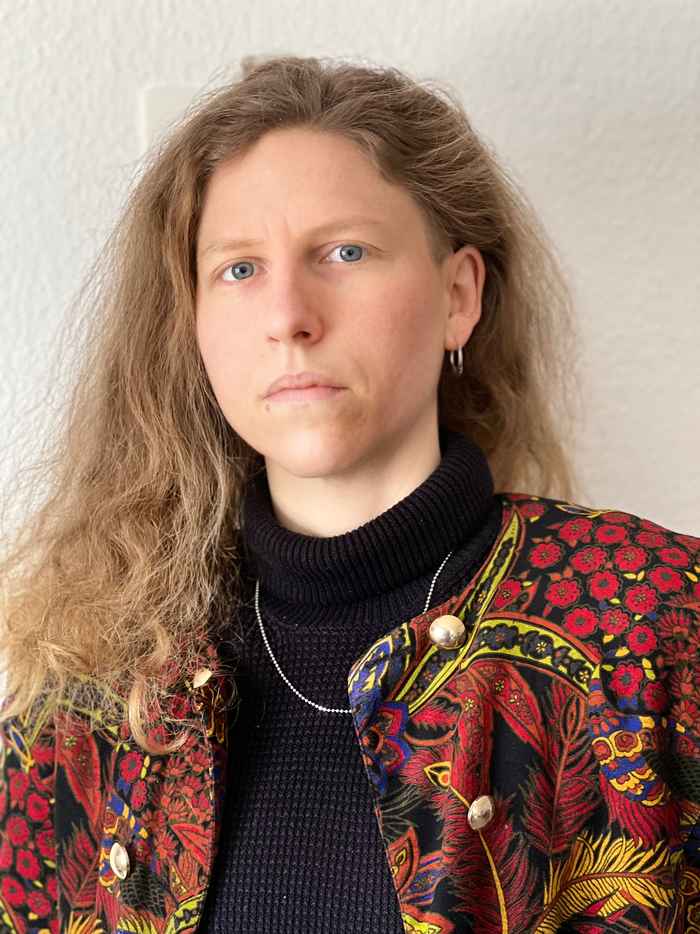Vossius Research Fellow V.E. Mandrij
5 September 2023

About the project
This research project investigates a technique at the crossing-point between art and natural history: the lepidochromy technique. This neologism coined in the 19th century combines the Greek term lepido, which means “scales”, with chromos, which stands for “colours” (Orousset 2008). This technique consists of making imprints of butterfly wings by transferring the colourful scales of dead specimens onto a flat surface. In the 17th century, the Dutch painter Otto Marseus van Schrieck used lepidochromy to represent lepidopterans in his still lifes and the
so-called sottoboschi, which represent flora and fauna in dark forests (Steensma 1999). Until the late 18th century, around twenty artists active in the Southern and Northern Netherlands and in Germany imitated Marseus’ iconography, sometimes using the lepidochromy technique (Leonhard 2020).
From the 18th century onwards, the lepidochromy technique played an important role in natural historical fields (Péru 2016). Using the real colours of lepidopterans aimed to produce images on paper with a strong accuracy for identification and classification purposes. Furthermore, this preserving method protected the photosensitive scales better than the entire insects kept in boxes. Amateurs and specialists published recipes in French, German, and English describing the making process in entomological treatises. No sources in Dutch have been found yet despite the use of this technique in Dutch artistic centres.
No historical research investigated the functions of lepidochromy and the transmission of practical knowledge about the technique. This project therefore advances research in history of natural history, knowledge and art by investigating the lepidochromy technique’s epistemological usefulness and transdisciplinary knowledge transfer between artists and naturalists in the 17th-18th centuries. To conduct this research successfully, two lines of research demand a 12-weeks research trip in the Netherlands.
The first line considers the oil painters. Artists active in Dutch cities imitated Marseus’ paintings and used lepidochromy, but it is unknown how they gained this practical knowledge. Contemporary painters such as Elias van den Broeck could have learnt from Marseus, whereas Johann Falch, born in Augsburg after the master’s death, must have acquired knowledge otherwise. The family members De Hamilton, painters of sottoboschi active in Brussel and travelling through Europe in the late 17th century, are relevant sources to study. Research about activities, biographies, and artworks of these key-figures is lacking and it is necessary to address these gaps. Searching in archives of Dutch and Belgian cities and the RKD will reconstruct Marseus’ knowledge network and map the circulation of the technique within the Southern and Northern Netherlands. Furthermore, artists probably mastered the technique by observing paintings or reading recipes. Close examinations under the
microscope of paintings housed in museums will help in comparing their use of lepidochromy with Marseus’ own. Finally, consulting undigitized sources, such as manuscripts, natural history treatises, and books of secrets, will provide hints about alternative ways of learning how to make lepidochromy.
The second line investigates early modern naturalists researching insects. Marseus van Schrieck was himself a scholar active in natural history circles (Seelig 2017, Jorink 2014). His use of lepidochromy coincided with a strong interest in studying insects under magnifying glasses, collecting dry specimens, and documenting them visually. His followers had similar interests: Elias van den Broeck depicted exotic plants, Rachel Ruysch helped her father to build anatomical and zoological collections (Hansen 1996), and the De Hamilton were commissioned many studies of natural items (Voigt et al. 2021). Publications by Johannes Goedaert and Jan Swammerdam count among the most significant entomological sources of that time (Ogilvie 2008). Late 17thcentury Amsterdam even became a centre for insect studies thanks to collections of dry specimens of Jan Swammerdam and Frederik Ruysch, among others, who were befriended with Marseus (Jorink 2010). Swammerdam even mentioned lepidochromy in his treatise (Swammerdam 1669). Archival research will therefore allow to examine the practices of these figures, who could have left unpublished information about the use of lepidochromy in the Dutch natural history context. Furthermore, rare historical butterfly imprints have been documented in natural history museums. The suspicion that many more survived is high since the lepidochromy technique is so understudied that imprints have been often mistaken with painted images. Careful research in collections of Dutch institutions such as the Allard Pierson Museum, Artis Library, Naturalis Biodiversity Center, among others, is necessary to find further examples of the early modern period. Ultimately, investigating natural history treatises will allow the identification of recipes describing the process in Dutch.
About the researcher
V.E. Mandrij (pronouns: they/them) is an art historian and a writer. They got their PhD in art history at the University of Konstanz in the research program Changing Frames. Art History and Art Technology in Exchange in collaboration with the Stuttgart State Academy of Fine Arts (2018-2023). Their thesis investigated the lepidochromy technique in the oeuvre of the Dutch painter Otto Marseus van Schrieck (c. 1620-1678) and combined methodologies from art history and conservation sciences.
They authored articles published in multi-authored volumes, including in the volume of the Netherlands Yearbook of Art History (2021). They are currently co-editing an anthology on insects and colours in art and natural history that will be published by Brill in 2024. They are also one co-founder of the research group Ecologies of Premodern Art hosted by the association of art historians Ulmer Verein.
Besides their academic research, Mandrij published prose. Currently, they are writing a philosophical essay on Dutch still-life paintings to demonstrate the importance of art (history) in the climate crisis.